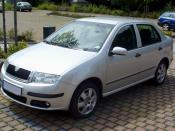Skoda
Introduction
The re-branding of Skoda provides a useful case study of the challenges faced by brands wishing to reposition themselves
Remember the Skoda jokes?
- What do you call a Skoda with a sun-roof? Answer: A skip
- Why does a Skoda have a heated rear windscreen? Answer: To keep your hands warm when you push it
- What do you call a Skoda with twin exhaust pipes? Answer: A wheelbarrow
Critics of the Skoda would be surprised to hear the Skoda is now one of the fastest-growing car brands in the UK motor industry. The Czech car company boosted its sales in the UK in 2001 by 24% as opposed to the average market growth of 10.7%. This built on growth of 34% in 2000.
How has this been achieved?
Background
Skoda had a monopoly in car manufacturing in Czechoslovakia until the 1989 'Velvet Revolution'. After this the Czech government started looking for a commercial partner to revitalise its Skoda factories.
In 1991, Volkswagen took a 30% stake in Skoda and started work in training and educating the workforce to Western quality standards. It invested over ã2 billion in the plant, research, development and new models. Ten years later, in 2001, VW took total control of the business.
The first two launches from the new Skoda camp were well-received by the automotive press. The Felicia - launched in 1994 - was built as an old-style Skoda, but enjoyed the benefit of VW features. The 1998 Octavia was built on the VW group platform.
The costs of the improved VW car structure pushed up Skoda prices. The cars carried a higher price tag and Skoda needed to convince consumers that this price was worth paying.
A VW marketing manager working for Skoda explained:
"We needed to move away from...


